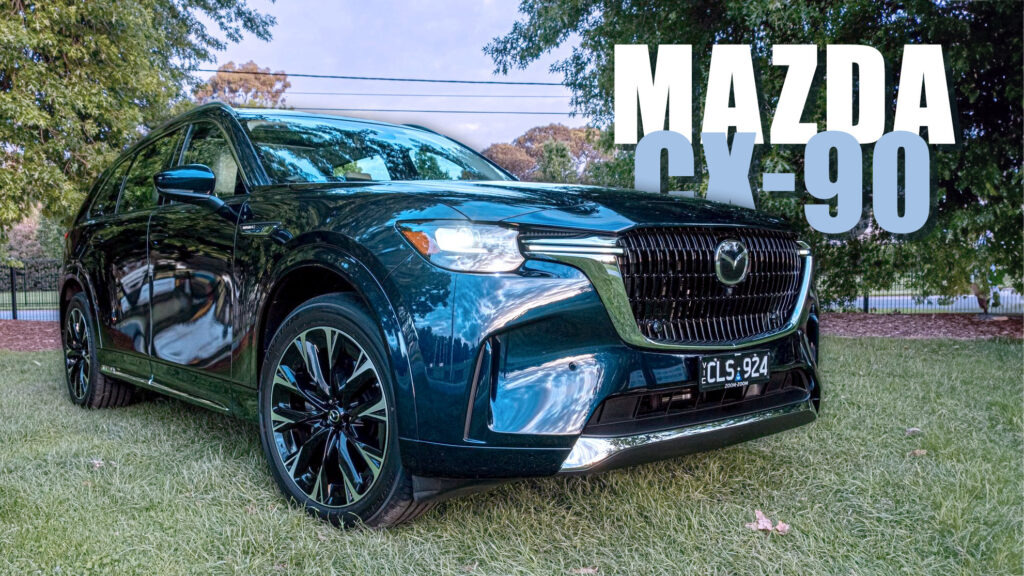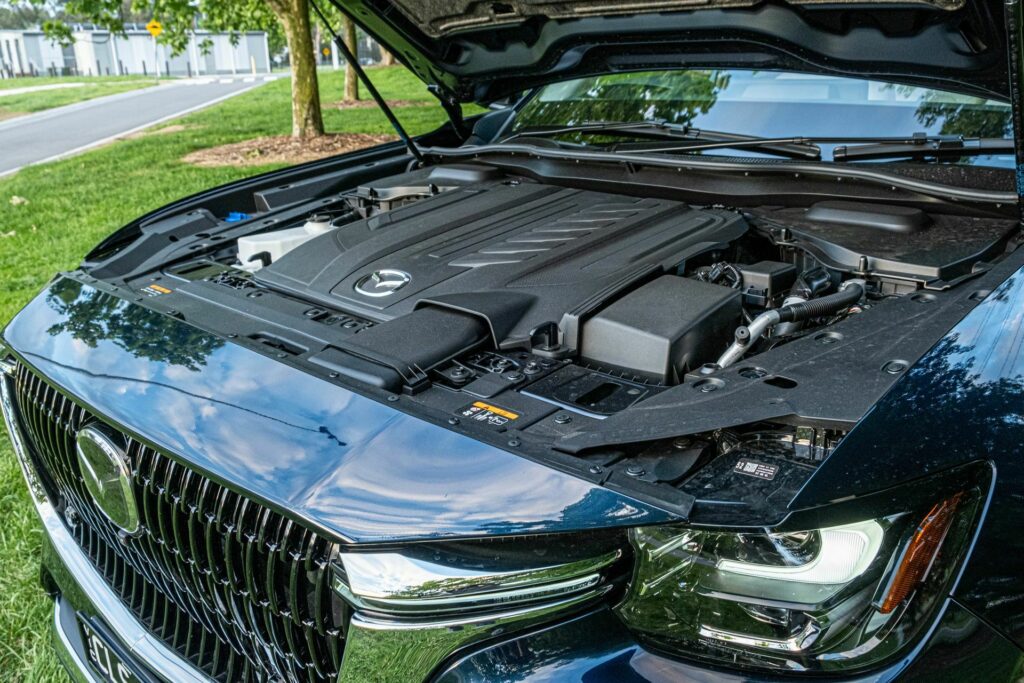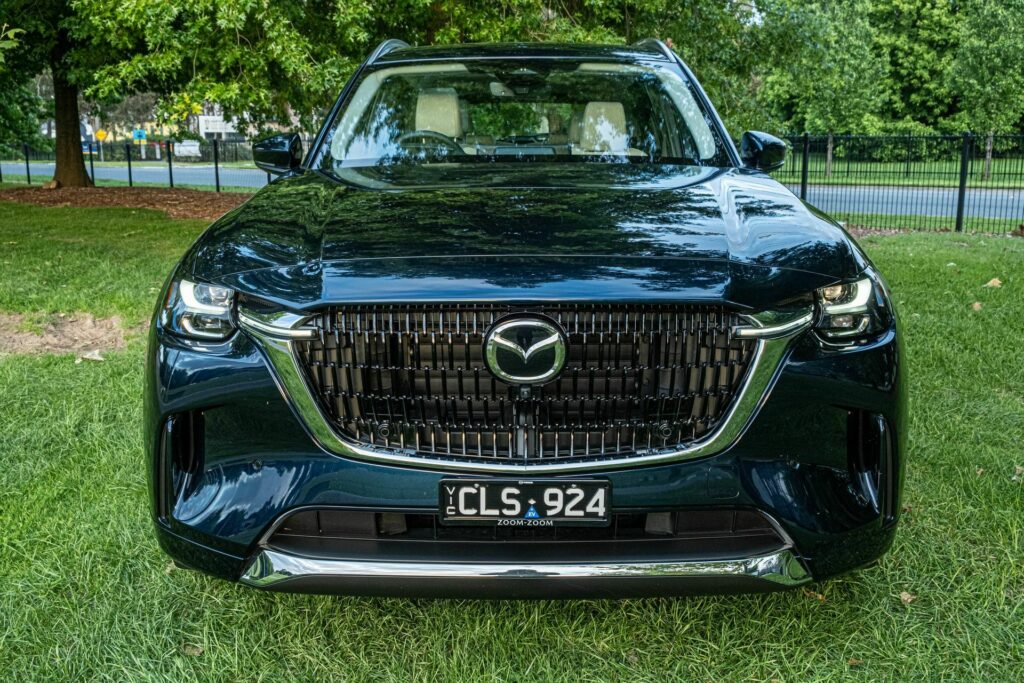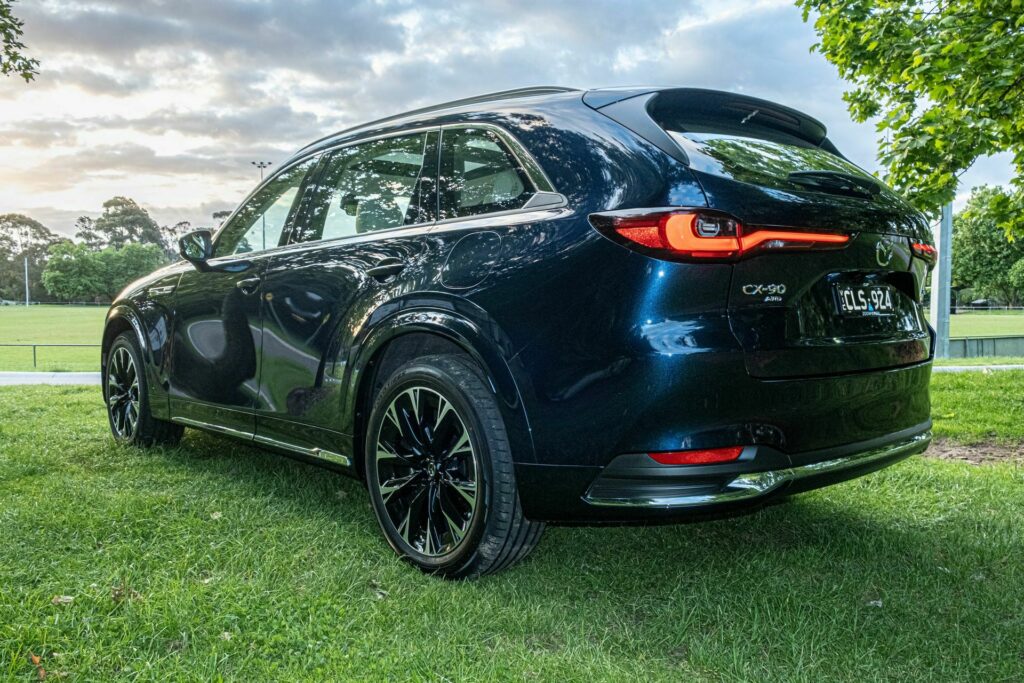
Powered by a new 3.3-liter inline-six diesel with 251 hp, the CX-90 D50e isn’t perfect, but it will tick most boxes of prospective buyers
7 hours ago
The Mazda CX-90 is the firm’s most expensive model ever sold in Australia and much like its smaller sibling, the CX-60, aims to take the fight to the European establishment of luxury SUVs. Mazda has shot for the moon with the CX-90 but has it reached its target, landed among the stars, or fallen completely short?
Much like the CX-60 we sampled a few weeks ago, the CX-90 is based on Mazda’s ‘Large Product Group’ platform. It serves as a direct replacement to the CX-9 that was around for the better part of two decades and Down Under, is the only current Mazda model that can be equipped with six or seven seats.
Quick facts
Design
While approaching the CX-90 for the first time, I was immediately struck by just how big and imposing it is. While it does share much of its design with the CX-60, it is quite a bit larger at 5,120 mm (201.4 inches) long and 1,994 mm (78.5 inches) wide, and stands 1,745 mm (68.7 inches) tall. While the SUV’s large footprint is immediately evident in photos, it is not until you see it in the flesh that you appreciate the added aura it has over the CX-60.
advertisement scroll to continue
Our test car was the flagship Azami painted in Deep Crystal Blue Mica. This color worked perfectly with the big SUV and while we’re generally not a fan of chrome, the shroud around the gloss black front grille was a nice touch.
Adding to the CX-90’s imposing figure are 21-inch wheels with black and silver accents wrapped in Toyo Proxes Sport tires. There are also a pair of intriguingly shaped LED headlights that intersect with separate LED daytime running lights that run horizontally and connect with the grille.
Photos Brad Anderson/Carscoops
Many of these elements are similar to those found on the CX-60 but the added size of the CX-90 is immediately apparent when it is viewed from the rear. Whereas the CX-60 has rear side windows with a BMW-esque Hofmeister kink, the windows of the CX-90 are noticeably larger. Additionally, the D-pillars are much thicker, the LED taillights are slightly bigger, and it stands a little more upright.
In the styling department, it looks every bit as refined as its key rivals, like the Genesis GV80, BMW X5, and Mercedes-Benz GLE.
And the cabin?
We walked away from our recent test of the CX-60 with a newfound respect for Mazda’s interior designs and felt the same after living with the CX-90 for a week. The model we tested came equipped with the AU$5,000 (~$3,300) Takumi Pack that adds second-row captain seats with ventilation, pure white Nappa leather seat trim, a white maple wood console panel, a center console/armrest in the second row, and a cloth area with stitching running across the dashboard.
Photos Brad Anderson/Carscoops
Mazda Australia also sells the CX-90 with the same AU$5,000 (~$3,300) SP Pack as the CX-60. It combines tan and black leather elements with areas of soft-touch suede and a two-tone steering wheel. Shoppers not willing to splurge the extra AU$5,000 on either the SP Pack or Takumi Pack can order it with the basic black Nappa leather in seven-seat guise.
Regardless of the interior configuration, all CX-90 models come well-equipped. Entry-level versions rock a 10.25-inch infotainment display and a 7.0-inch digital instrument cluster while higher-end versions have a pair of 12.3-inch screens. All versions support wired and wireless Apple CarPlay and Android Auto, as well as Mazda’s familiar operating system that’s intuitive to ease, albeit a little bit basic compared to some of the competition.
Like the CX-60, there is a system where you can input your height and the seat will automatically move into what Mazda believes is the perfect driving position. While it sounds nice on paper, it didn’t work very well for me and put me in a rather awkward position.
Photos Brad Anderson/Carscoops
The cabin of the CX-90 feels like a very premium place to sit, aided by the fact that it has a thumping 12-speaker Bose audio system. The captain’s seats in the second row are lovely but headroom is a little compromised if the backrests aren’t reclined. It’s also a shame that Mazda doesn’t offer the CX-90 as a seven-seater with either the SP Pack or Takumi Pack as we think the seven-seat version will suit more buyers. Space in the third row is surprisingly generous and you can sit back there in relative comfort.
advertisement scroll to continue
The trunk is generous with 608 liters (21.4 cubic feet) of carrying capacity with the third-row of seats in position or 2,025 liters (71.5 cubic feet) with both the second and third-row seats folded down.
Read: Mazda CX-90 Hit With Two Recalls Over An Overeager Failsafe Mode And Bad Cameras
Mazda has also crammed in plenty of technology into the cabin of the CX-90. A large head-up display is among the highlights as is the panoramic sunroof, heated steering wheel, heated front and rear seats, ambient lighting, and a 360-degree view monitor available only on the Azami specification.
The CX-90 is an altogether wonderful place to spend time in and certainly feels worthy of the six-figure price tag, even though the cabin is almost identical to the smaller and cheaper CX-60.

More refined than its smaller sibling
Much like the CX-60 that we drove, the CX-90 D50e Azami that we tested was equipped with the available 3.3-liter turbo diesel inline-six engine with a 48-volt mild-hybrid system. This engine is paired with an eight-speed automatic transmission driving all four wheels and while the powertrain package proved to be compelling in the CX-60, it was not without fault and felt quite lumbered and unrefined at low speeds. Fortunately, the CX-90 feels that little more polished.
Power figures remain unchanged, meaning the six- or seven-seater delivers 187 kW (251 hp) at 3,750 rpm and 550 Nm (406 lb-ft) of torque between 1,500 rpm and 2,400 rpm. Those seeking some extra performance can opt for the 3.3-liter turbocharged petrol inline-six with its 254 kW (341 hp) and 550 Nm (406 lb-ft) but for most buyers, the diesel provides more than enough performance. Not only is the throttle response excellent but power delivery is smooth and consistent, and it feels like it has more torque than it does. We wouldn’t describe the D50e as rapid but it feels quicker than the 8.4 second 0-100 km/h (0-62 mph) time would lead you to believe.

Photos Brad Anderson/Carscoops
As in the CX-60, Mazda’s engineers have incorporated a synthetic sound generator to drown out the inherent coarseness of the large capacity diesel engine and replace it with a sonorous note that’s quite addictive.
The transmission of the CX-90 is the same eight-speed unit developed in-house by Mazda as found in its smaller sibling. We found this gearbox to be rather jerky at low speeds in the CX-60 but it has been improved in the CX-90 and is much smoother at slow speeds and during gentle acceleration. Indeed, the difference is so significant that you could be excused for thinking it is an entirely new transmission.
Improvements have also been made to the ride of the CX-90. Whereas the CX-60 felt rather clumsy and would repeatedly bounce up and down after speed bumps, rather than quickly settling, the CX-90’s ride is a touch firmer and doesn’t have the same bounciness.

Photos Brad Anderson/Carscoops
Like other vehicles out there with 48-volt mild-hybrid systems, the CX-90 will intelligently switch off the engine during coasting and braking and it does so in a very smooth manner, rarely interrupting the driving experience. This setup pays dividends in the fuel efficiency stakes with Mazda claiming it’ll sip just 5.4 l/100 km (43.5 U.S. mpg) over the combined cycle. We averaged 7.2 l/100 km (32.6 U.S. mpg) during our week with it, which was quite good despite not matching Mazda’s claim.
Read: Mazda’s Plan To Push Upmarket Detailed By New North American CEO
Dynamically, the CX-90 is a solid performer. It has beautifully weighted and direct steering and while it weighs over 2,200 kg (4,850 lbs), it hides its weight surprisingly well. It certainly feels sportier than some other offerings in this segment, like the Genesis GV80, and can be quite fun to drive. The downside of the firm suspension is that it is not as comfortable as some other models from the carmaker, like the Mazda3, and that’s something family buyers should keep in mind. The last thing you’d want are second- and third-row passengers complaining about the stiff ride so arranging a test drive is a good idea.
Should I buy one?
While we do not doubt that the price of the CX-90 will dissuade some buyers, it feels on par with what AU~$100,000 (~$65,700) buys you these days and is a compelling proposition. The interior is superb, it looks nice, and the powertrain is a good all-rounder. However, it would benefit from even further transmission calibration and a slightly better-sorted suspension setup.
